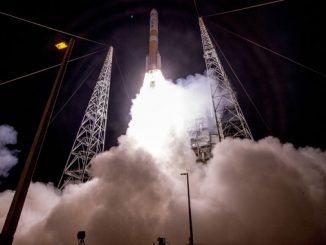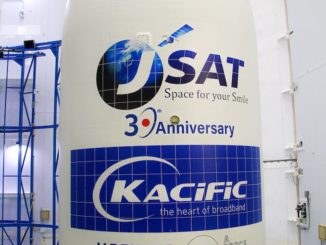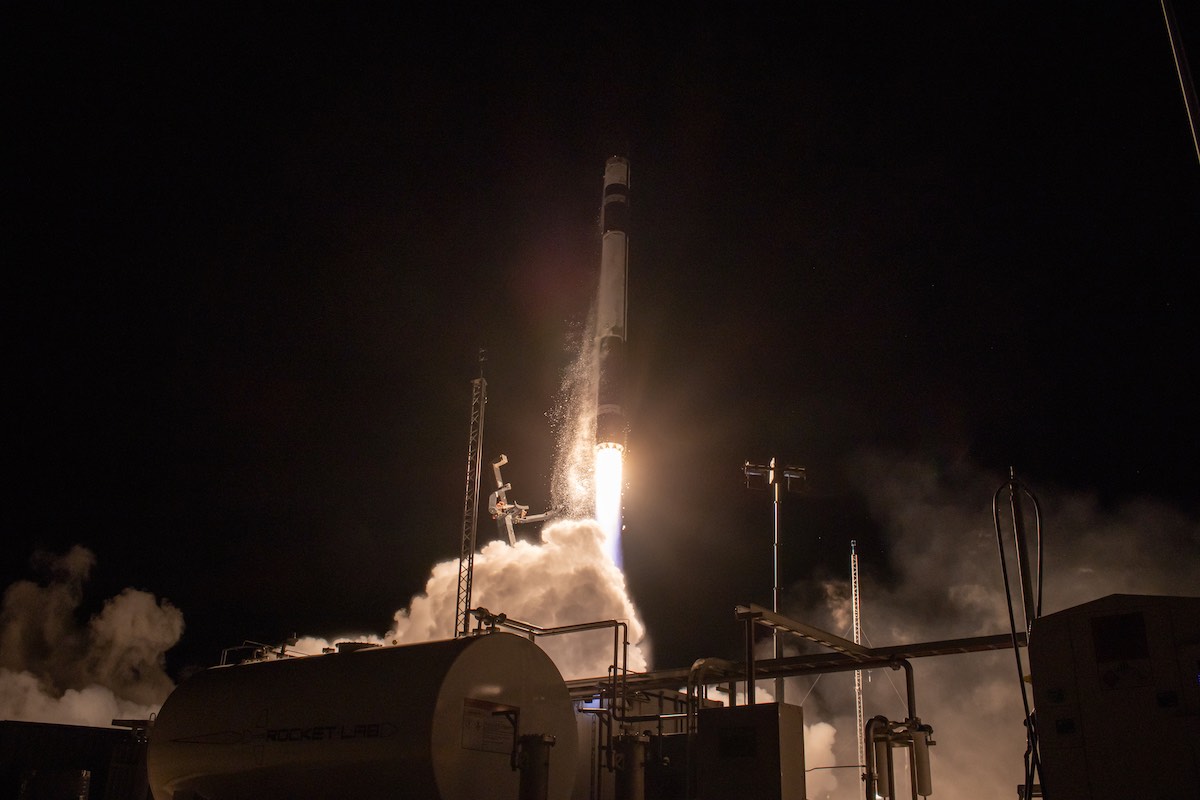
Rocket Lab’s seventh and final launch of the year delivered a small radar observation satellite into orbit for Synspective, a Japanese startup planning a fleet of 30 or more Earth-imaging spacecraft providing day-and-night imagery of cities around the world.
The liquid-fueled Electron rocket’s kick stage deployed Synspective’s StriX-α demonstration satellite into a roughly 310-mile-high (500-kilometer) sun-synchronous polar orbit around an hour after liftoff, Rocket Lab said in a statement.
The 59-foot-tall (18-meter) Electron rocket took off from Launch Complex 1 on Mahia Peninsula, located on the North Island of New Zealand, at 5:09 a.m. EST (1009 GMT; 11:09 p.m. New Zealand time).
A live video webcast from Rocket Lab showed the Electron firing into the night sky, heading south from Mahia on a trajectory toward the mission’s targeted orbit.
Nine Rutherford engines, consuming kerosene and liquid oxygen propellants, accelerated the Electron launcher into the upper atmosphere with more than 50,000 pounds of thrust. The first stage shut down and separated about two-and-a-half minutes into the flight, giving way to the Electron’s second stage engine to propel the rocket into a preliminary parking orbit.
Synspective’s StriX-α (StriX-Alpha) spacecraft, weighing approximately 330 pounds (150 kilograms), was fitted inside a custom payload fairing for launch Tuesday.
The expanded fairing, with four notches to fit the cube-shaped StriX-α spacecraft, was the first use of the company’s larger fairing options recently introduced alongside several other vehicle performance improvements. The upgrades include advances in battery technology, enabling the Electron rocket to deliver more massive payloads into orbit.
With the improvements, the Electron rocket can carry up to 660 pounds (300 kilograms) on missions to low-altitude orbits, or 440 pounds (200 kilograms) to a 310-mile-high sun-synchronous orbits, a destination favored by many Earth observation satellites.
That represents about a 33 percent increase in payload lift capability. The improvements help offset the effect of adding parachutes and recovery equipment to the Electron’s first stage.
The StriX-α satellite is Synspective’s first synthetic aperture radar satellite. The Tokyo-based company, was established in 2018 and developed its satellite technology with aid from the Japanese government.
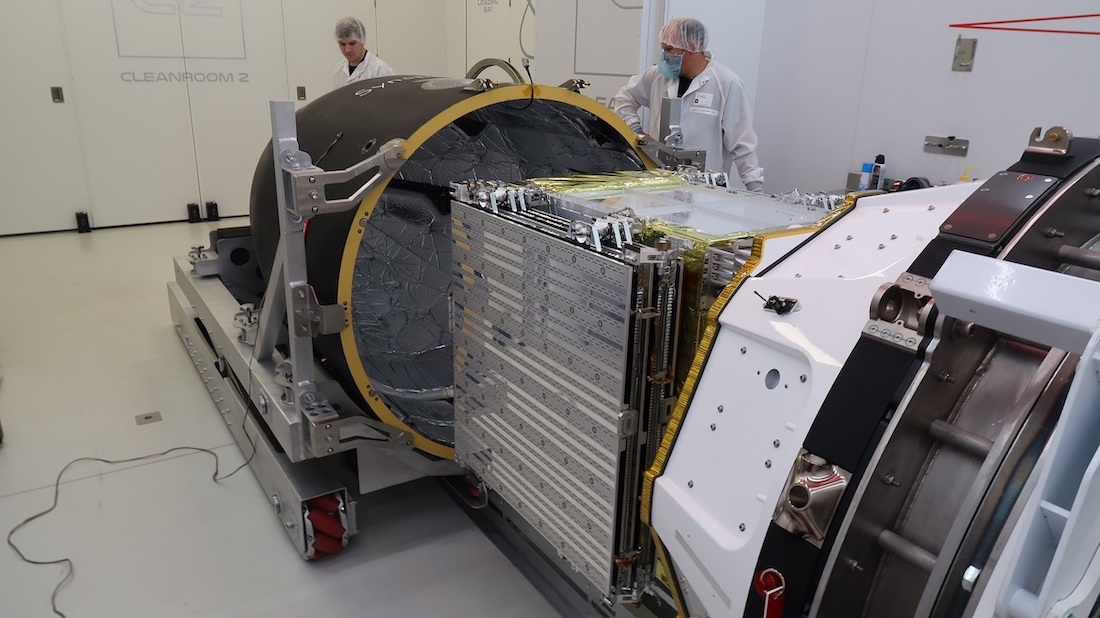
Synspective says its planned fleet of 30 radar imaging satellites will primarily be for commercial use surveying cities and urban infrastructure. The company says it has raised $100 million from Japanese investors since its founding nearly three years ago.
StriX-α, a demonstrator, is about one-tenth the size of a conventional large radar imaging satellite. Its deployable antenna, which was folded up for launch, measures about 16 feet (5 meters) long.
“Functions, including both observation and data acquisition, will be verified over the next several months,” Synspective said in a statement after Tuesday’s launch.
Synspective is one of several companies planning to build out constellations of radar satellites for Earth-imaging. ICEYE of Finland and California-based Capella Space have already launched multiple small satellites with sophisticated radar payloads.
Satellites with synthetic aperture radar instruments can image Earth’s surface in day and night. Radar imagers can also peer through clouds and storms that block views from optical cameras.
The StriX constellation will have a ground resolution of 1 to 3 meters, or 3 to 10 feet, according to Synspective.
A second StriX satellite, named StriX-β (StriX-Beta), will launch in 2021.
“By 2022, Synspective will launch four commercial satellites, aiming to build and operate a system that enables wide-area, high-frequency ground observation with a constellation of 30 satellites,” the company said in a statement.
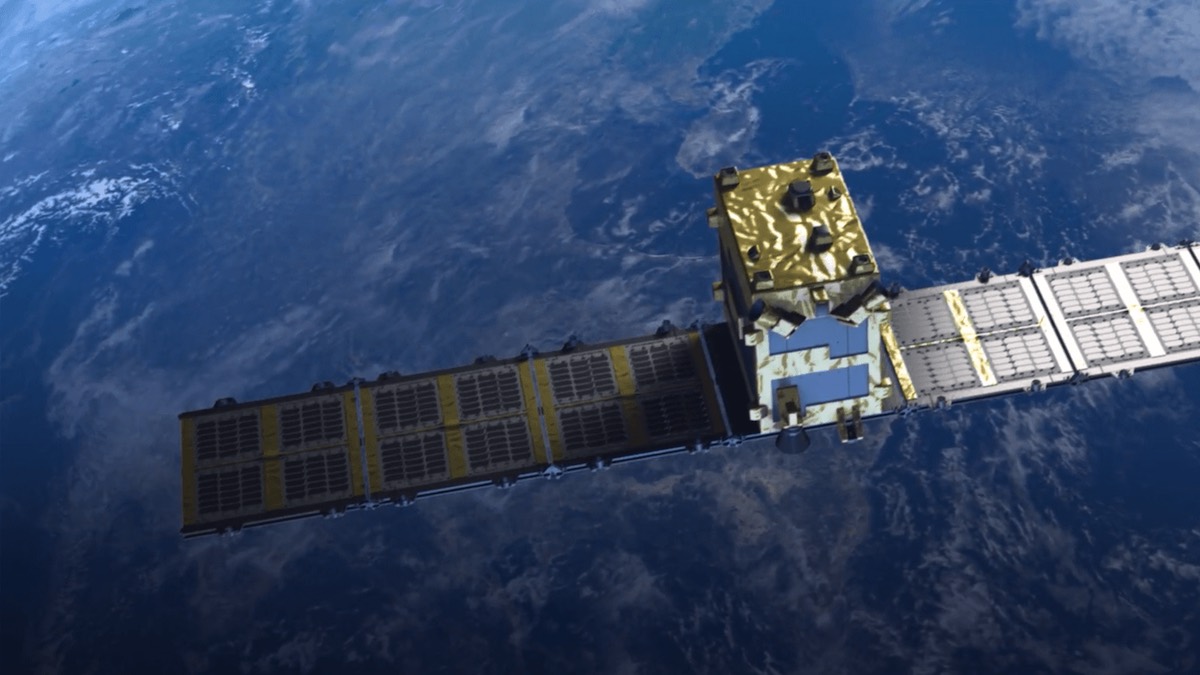
“Congratulations to the team at Synspective for the successful deployment of their first satellite,” said Peter Beck, Rocket Lab’s founder and CEO. “We’re proud to be able to continue to provide dedicated launch opportunities for small satellite customers like Synspective. Electron provides truly tailored access to space, enabling our customers to choose exactly when they launch and under their specific mission parameters.”
“Thanks to the efforts and hard work of both the Rocket Lab and Synspective teams, we were able to achieve a successful launch as scheduled, despite the difficult environment of COVID-19,” said Motoyuki Arai, founder and CEO of Synspective. “With the launch of StriX-α, Synspective will be able to demonstrate its satellite capabilities and data processing technology.
“This is the first step towards our constellation of 30 satellites and along with the development of our solutions, a full-scale business expansion will begin,” Arai said in a statement. “Starting with this success, we will move tangibly closer towards the attainment of an advanced world, expanding people’s understanding and learning capabilities with new data and technologies.”
Rocket Lab did not attempt to recover the Electron’s first stage Tuesday, following the company’s first successful retrieval of an Electron booster on a previous launch last month. Rocket Lab aims to eventually catch boosters falling under parachutes with a helicopter for refurbishment and reuse.
Rocket Lab plans to resume stage recoveries with the next Electron launch in early 2021.
The launch Tuesday marked the 17th flight of Rocket Lab’s Electron launcher, and the company’s seventh and final mission of 2020, breaking Rocket Lab’s record of six missions in 2019.
Rocket Lab says its plans for 2021 include even more flights, with the company’s first mission from a new launch site at Wallops Island, Virginia, more booster recovery attempts, and the launch of a small NASA satellite to the moon.
Email the author.
Follow Stephen Clark on Twitter: @StephenClark1.


